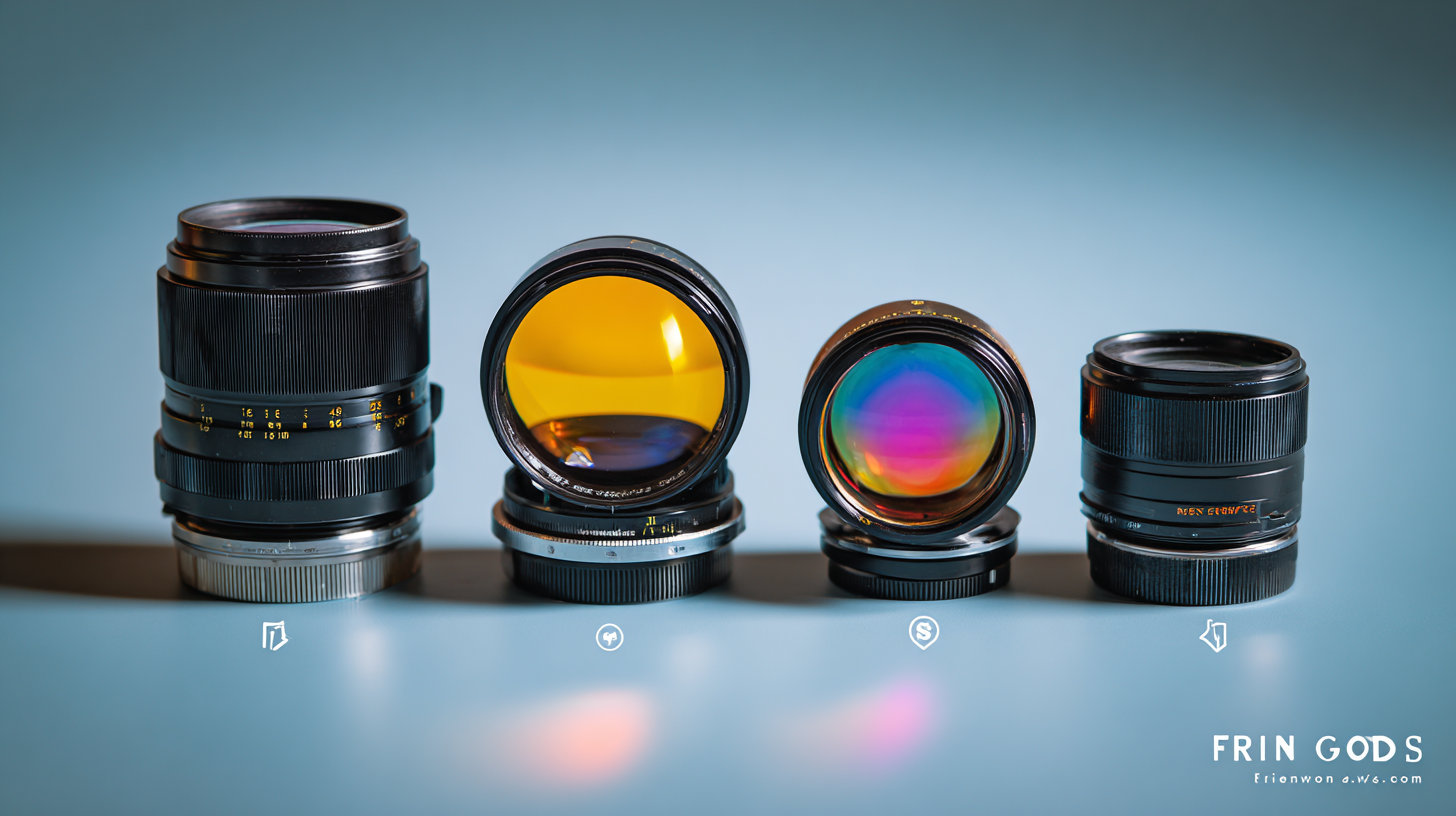In today's optical market, the selection of eyewear is not just about aesthetics; it’s crucial to choose materials that enhance vision and comfort. Resin lenses have gained significant attention due to their lightweight nature and enhanced durability. According to a report by the Vision Council, approximately 60% of eyewear consumers prioritize comfort, and resin lenses are often preferred for their ability to resist shattering while providing superior optical clarity. Additionally, with global eyewear sales expected to exceed $180 billion by 2024, understanding the properties and benefits of resin lenses becomes increasingly essential for consumers looking to make informed choices. This blog will guide you through the essential factors to consider when selecting the best resin lens for your optical needs, ensuring you achieve both style and optimal vision correction.

The evolution of resin lens technology has significantly reshaped the optical landscape, promising even more advancements by 2025. A report by Markets and Markets highlights that the global eyewear market, which includes resin lenses, is expected to reach $200 billion by 2025, driven by increasing consumer demand for lightweight and high-performance eyewear. Resin lenses, known for their versatility and superior optical clarity, are becoming the go-to choice for many users, especially in sports and everyday wear scenarios.
Technological advancements like digital freeform lens design and improved coating technologies are set to enhance resin lens performance. According to a study published by the American Optometric Association, approximately 70% of eyewear consumers are influenced by lens weight and comfort, indicating a clear trend towards thicker, heavier lenses being phased out in favor of modern resin options. As we look ahead, we can anticipate that innovations in polycarbonate and high-index materials will further improve scratch resistance and reduce UV exposure, making resin lenses an even more appealing choice for optical needs in the coming years.
This chart illustrates the projected growth of resin lens technology market share from 2015 to 2025. As innovation in material and manufacturing processes continue to evolve, the market share of resin lenses is expected to increase significantly, reflecting advancements in optical clarity and consumer preference.
When selecting resin lenses for your optical needs, several key features should be prioritized to ensure optimal performance and protection. One of the most significant factors is the lens material itself;
polyurethane, for example, is emerging as a superior option due to its enhanced durability and resistance to environmental stressors. This makes it an excellent choice for users who require reliable optics in challenging conditions,
such as in bright lighting environments where glare is a concern.
Another critical feature to consider is the lens coating. Anti-reflective coatings not only improve clarity by reducing glare but also enhance scratch resistance, which is paramount for maintaining lens integrity over time.
Reports indicate that lenses with advanced coatings can reduce reflection by up to 99%, significantly improving visual comfort. Additionally, UV protection is essential, especially in outdoor settings where exposure can lead to long-term eye damage. Therefore, selecting resin lenses that effectively filter harmful UV rays can protect your eyes while ensuring clear visibility, making them ideal for outdoor activities or industries that demand long hours of use.
When it comes to selecting resin lenses tailored for specific optical needs, understanding the various types available on the market is crucial. Different types of resin lenses cater to unique functionalities, be it for fishing, sports, or everyday use. For instance, fishing sunglasses should prioritize features like polarization and UV protection rather than merely aesthetics. This ensures anglers can reduce glare from the water's surface, enhancing visibility underwater and improving their overall fishing experience.
Furthermore, innovations in lens manufacturing, such as 3D printing, are paving the way for more customized solutions. Recent advancements have shown that 3D printing can play a significant role in creating high-quality lenses that match specific requirements. By allowing for tailored designs, these lenses can provide better optical clarity and durability compared to traditional manufacturing methods. As the industry evolves, it becomes increasingly important for consumers to stay informed about such developments to make the best choice for their optical needs.

When choosing resin lenses for optical needs, one must pay close attention to the advanced coatings that can significantly impact lens performance. Modern coatings can enhance optical qualities such as scratch resistance, anti-reflective properties, and UV protection. For instance, anti-reflective coatings can reduce glare and improve light transmission by up to 99%, making them essential for activities requiring high visual acuity. Additionally, these coatings can also provide hydrophobic properties, making lenses easier to clean and maintain.

Recent advancements in lens manufacturing, particularly through 3D printing, offer innovative avenues for creating high-quality optical components. Research indicates that while 3D printing allows for the rapid prototyping of complex designs, challenges remain regarding surface quality and dimensional accuracy. A study published in Advanced Functional Materials notes that while precision spin coating can alleviate some issues, the development of new materials and techniques is necessary for achieving the highest standards in lens performance. Thus, selecting the right resin lens, enhanced by advanced coatings and innovative manufacturing techniques, is crucial for optimal optical functionality.
The world of resin lenses is rapidly evolving, with exciting innovations on the horizon. As technology advances, manufacturers are exploring new materials and processes to enhance lens performance. One of the key trends in resin lens design is the integration of advanced coatings that enhance clarity and reduce glare. These coatings are designed not only to improve visual comfort but also to extend the life of the lenses.
Tip: When selecting a resin lens, consider those with anti-reflective coatings, especially if you spend long hours in front of screens. This will significantly reduce eye strain and improve overall visual comfort.
Another area of innovation is the development of lightweight, high-index materials that cater to individual prescription needs. These materials allow for thinner and lighter lenses without compromising on quality or durability. As manufacturers perfect these materials, individuals with stronger prescriptions can enjoy more comfortable and aesthetic options.
Tip: Always check the index of refraction of the lens you choose; higher indexes often result in thinner lenses, which can be especially beneficial if you have a strong prescription.

